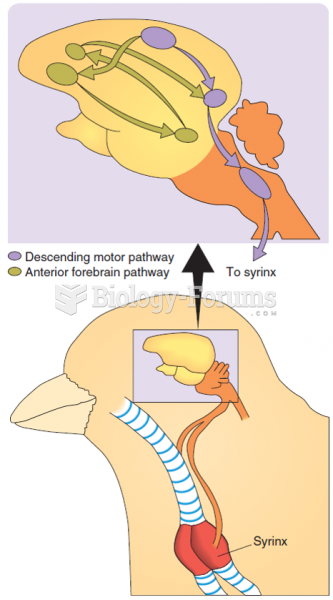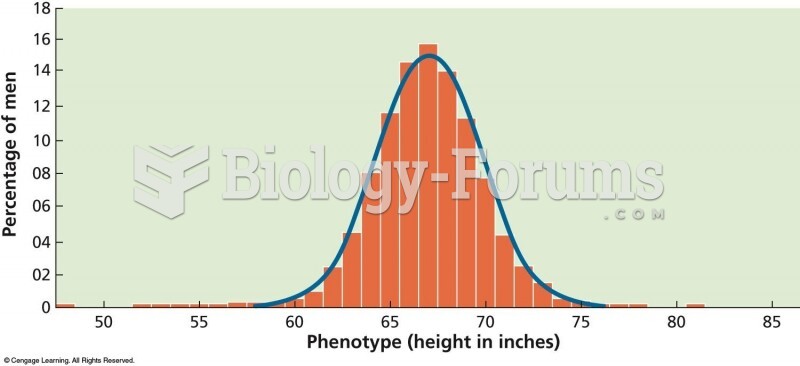|
|
|
IgA antibodies protect body surfaces exposed to outside foreign substances. IgG antibodies are found in all body fluids. IgM antibodies are the first type of antibody made in response to an infection. IgE antibody levels are often high in people with allergies. IgD antibodies are found in tissues lining the abdomen and chest.
The Romans did not use numerals to indicate fractions but instead used words to indicate parts of a whole.
There are 20 feet of blood vessels in each square inch of human skin.
Vital signs (blood pressure, temperature, pulse rate, respiration rate) should be taken before any drug administration. Patients should be informed not to use tobacco or caffeine at least 30 minutes before their appointment.
Egg cells are about the size of a grain of sand. They are formed inside of a female's ovaries before she is even born.







